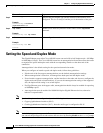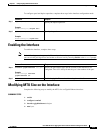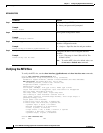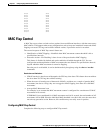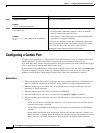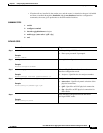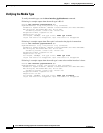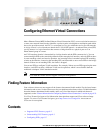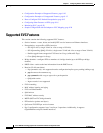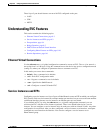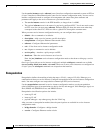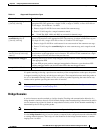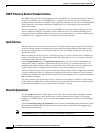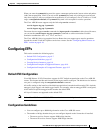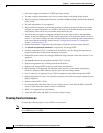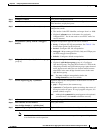
8-2
Cisco ASR 901 Series Aggregation Services Router Software Configuration Guide
OL-23826-09
Chapter 8 Configuring Ethernet Virtual Connections
Supported EVC Features
• Configuration Examples of Supported Features, page 8-10
• Configuration Examples of Unsupported Features, page 8-12
• How to Configure EVC Default Encapsulation, page 8-13
• Configuring Other Features on EFPs, page 8-16
• Monitoring EVC, page 8-28
• Sample Configuration with Switchport to EVC Mapping, page 8-29
Supported EVC Features
This section contains the following supported EVC features:
• Service instance—create, delete, and modify EFP service instances on Ethernet interfaces.
• Encapsulation—map traffic to EFPs based on:
–
802.1Q VLANs (a single VLAN or a list or range of VLANs)
–
802.1Q tunneling (QinQ) VLANs (a single outer VLAN and a list or range of inner VLANs)
–
Double-tagged frames mapped to EVC based on C-tags (wildcard S-Tags)
–
Cisco QinQ ethertype for S-tags
• Bridge domains—configure EFPs as members of a bridge domain (up to 64 EFPs per bridge
domain).
• DHCP client—retrieves the host information from the DHCP server.
• Rewrite (VLAN translation)
–
Pop symmetric only—the supported rewrite configuration implies egress pushing (adding a tag)
1. pop 1 removes the outermost tag
2. pop symmetric adds a tag on egress for a push operation
–
QinQ with rewrite
–
Ingress rewrite is not supported
• EVC forwarding
• MAC address learning and aging
• EVCs on EtherChannels
• Split horizon
• EVC MAC address security
• MSTP (MST on EVC bridge domain)
• EFP statistics (packets and bytes)
• QoS aware EVC/EFP per service instance
• Pop 2 configuration supports layer 2 and layer 3 operations. Additionally, it supports
GigabitEthernet and port channel interfaces.



